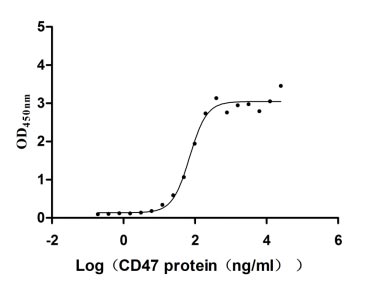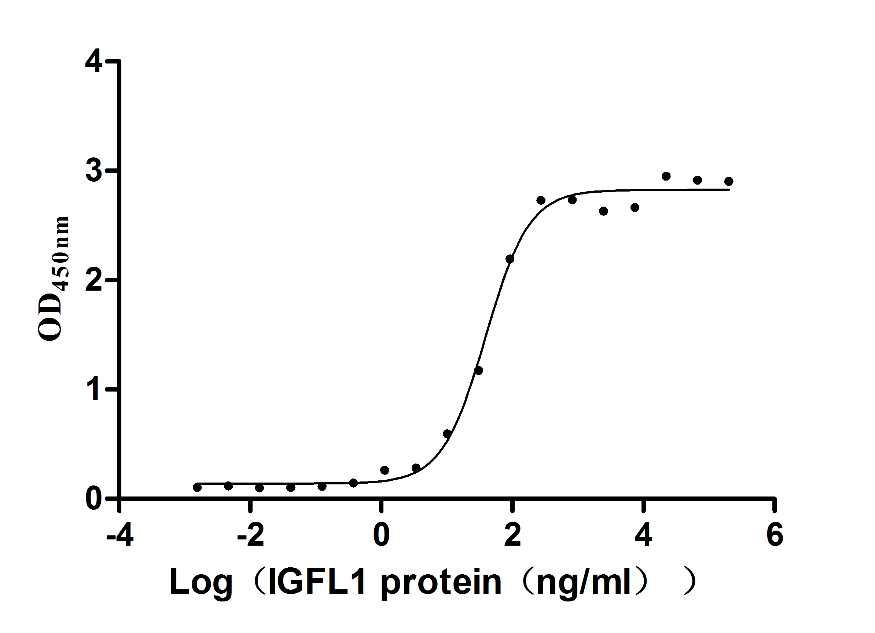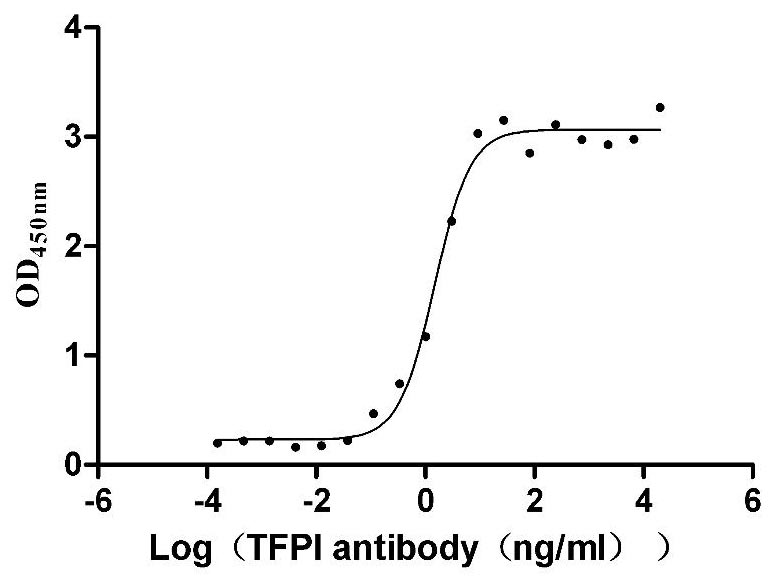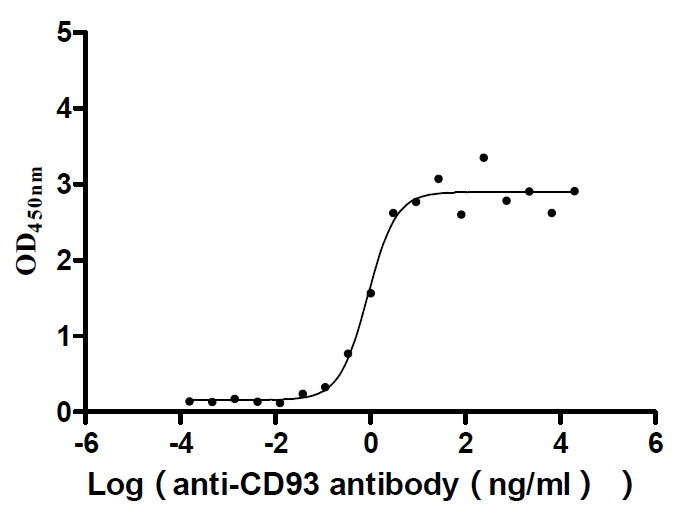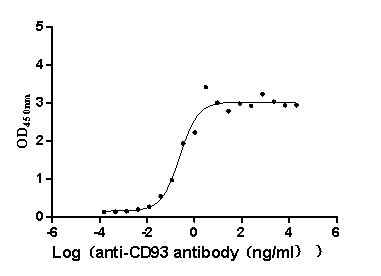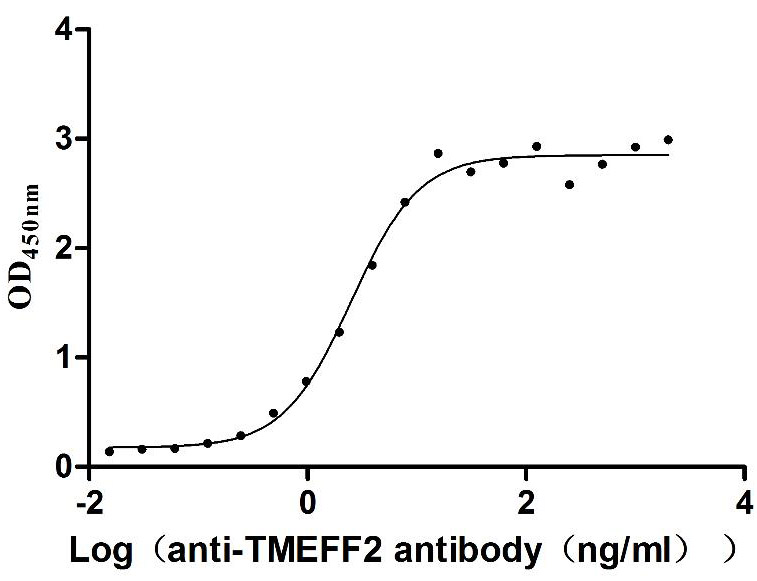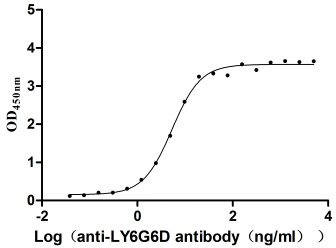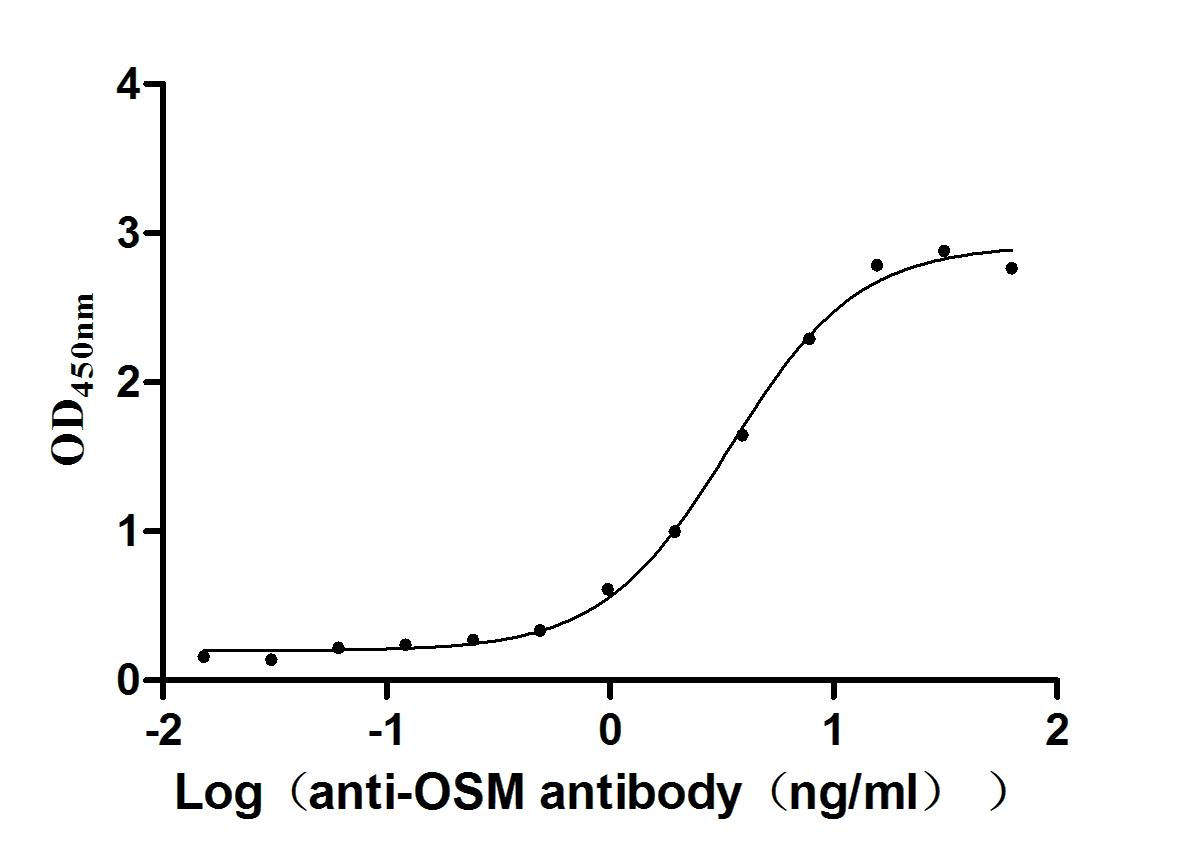Recombinant Human U4/U6.U5 tri-snRNP-associated protein 2 (USP39)
-
中文名称:人USP39重组蛋白
-
货号:CSB-YP681507HU
-
规格:
-
来源:Yeast
-
其他:
-
中文名称:人USP39重组蛋白
-
货号:CSB-EP681507HU
-
规格:
-
来源:E.coli
-
其他:
-
中文名称:人USP39重组蛋白
-
货号:CSB-EP681507HU-B
-
规格:
-
来源:E.coli
-
共轭:Avi-tag Biotinylated
E. coli biotin ligase (BirA) is highly specific in covalently attaching biotin to the 15 amino acid AviTag peptide. This recombinant protein was biotinylated in vivo by AviTag-BirA technology, which method is BriA catalyzes amide linkage between the biotin and the specific lysine of the AviTag.
-
其他:
-
中文名称:人USP39重组蛋白
-
货号:CSB-BP681507HU
-
规格:
-
来源:Baculovirus
-
其他:
-
中文名称:人USP39重组蛋白
-
货号:CSB-MP681507HU
-
规格:
-
来源:Mammalian cell
-
其他:
产品详情
-
纯度:>85% (SDS-PAGE)
-
基因名:
-
Uniprot No.:
-
别名:65K; CGI 21; CGI-21; FLJ33136; HSPC332; Inactive ubiquitin specific peptidase 39; Inactive ubiquitin-specific peptidase 39; MGC75069; PRO2855; S. CEREVISIAE, HOMOLOG OF SAD1; SAD1; SAD1 homolog; Small nuclear ribonucleoprotein 65kDa (U4/U6.U5); snRNP ASSEMBLY DEFECTIVE 1; SnRNP assembly defective 1 homolog; SNRNP65; SNUT2_HUMAN; U4/U6.U5 tri snRNP associated 65 kDa protein; U4/U6.U5 tri snRNP associated protein 2; U4/U6.U5 tri-snRNP-associated 65 kDa protein; U4/U6.U5 tri-snRNP-associated protein 2; Ubiquitin specific peptidase 39; Ubiquitin specific protease 39; USP39
-
种属:Homo sapiens (Human)
-
蛋白长度:full length protein
-
表达区域:1-565
-
氨基酸序列MSGRSKRESR GSTRGKRESE SRGSSGRVKR ERDREREPEA ASSRGSPVRV KREFEPASAR EAPASVVPFV RVKREREVDE DSEPEREVRA KNGRVDSEDR RSRHCPYLDT INRSVLDFDF EKLCSISLSH INAYACLVCG KYFQGRGLKS HAYIHSVQFS HHVFLNLHTL KFYCLPDNYE IIDSSLEDIT YVLKPTFTKQ QIANLDKQAK LSRAYDGTTY LPGIVGLNNI KANDYANAVL QALSNVPPLR NYFLEEDNYK NIKRPPGDIM FLLVQRFGEL MRKLWNPRNF KAHVSPHEML QAVVLCSKKT FQITKQGDGV DFLSWFLNAL HSALGGTKKK KKTIVTDVFQ GSMRIFTKKL PHPDLPAEEK EQLLHNDEYQ ETMVESTFMY LTLDLPTAPL YKDEKEQLII PQVPLFNILA KFNGITEKEY KTYKENFLKR FQLTKLPPYL IFCIKRFTKN NFFVEKNPTI VNFPITNVDL REYLSEEVQA VHKNTTYDLI ANIVHDGKPS EGSYRIHVLH HGTGKWYELQ DLQVTDILPQ MITLSEAYIQ IWKRRDNDET NQQGA
-
蛋白标签:Tag type will be determined during the manufacturing process.
The tag type will be determined during production process. If you have specified tag type, please tell us and we will develop the specified tag preferentially. -
产品提供形式:Lyophilized powder
Note: We will preferentially ship the format that we have in stock, however, if you have any special requirement for the format, please remark your requirement when placing the order, we will prepare according to your demand. -
复溶:We recommend that this vial be briefly centrifuged prior to opening to bring the contents to the bottom. Please reconstitute protein in deionized sterile water to a concentration of 0.1-1.0 mg/mL.We recommend to add 5-50% of glycerol (final concentration) and aliquot for long-term storage at -20℃/-80℃. Our default final concentration of glycerol is 50%. Customers could use it as reference.
-
储存条件:Store at -20°C/-80°C upon receipt, aliquoting is necessary for mutiple use. Avoid repeated freeze-thaw cycles.
-
保质期:The shelf life is related to many factors, storage state, buffer ingredients, storage temperature and the stability of the protein itself.
Generally, the shelf life of liquid form is 6 months at -20°C/-80°C. The shelf life of lyophilized form is 12 months at -20°C/-80°C. -
货期:Delivery time may differ from different purchasing way or location, please kindly consult your local distributors for specific delivery time.Note: All of our proteins are default shipped with normal blue ice packs, if you request to ship with dry ice, please communicate with us in advance and extra fees will be charged.
-
注意事项:Repeated freezing and thawing is not recommended. Store working aliquots at 4°C for up to one week.
-
Datasheet :Please contact us to get it.
靶点详情
-
功能:Plays a role in pre-mRNA splicing as a component of the U4/U6-U5 tri-snRNP, one of the building blocks of the precatalytic spliceosome. Regulates AURKB mRNA levels, and thereby plays a role in cytokinesis and in the spindle checkpoint. Does not have ubiquitin-specific peptidase activity.
-
基因功能参考文献:
- The above findings suggest that USP39 plays a vital oncogenic role in the tumorigenesis of prostate cancer PMID: 26959883
- Knockdown of USP39 expression in osteosarcoma cell line U2OS cell significantly decreased cell proliferation, impaired colony formation ability. A further analysis indicated suppression of USP39 arrested cell cycle progression at G2/M phase via p21 dependent way. In addition, the results of Annexin V/7-AAD staining suggested the knockdown of USP39 could promote U2OS cell apoptosis through PARP cleavage. PMID: 28403900
- Data suggest that ZIP, USP39, Prp24/p100/SART3, and Prp43 associate to form complex instrumental in spliceosome assembly; ZIP regulates pre-mRNA splicing of USP39 independent of RNA binding; stable 35S tri-snRNP particles are enriched in Cajal body. (ZIP = zinc finger and G-patch domain-containing protein; SART3 = squamous cell carcinoma antigen recognised by T cells 3; Prp43 = RNA helicase Prp43) PMID: 28878014
- High USP39 expression is associated with colon and lung cancer. PMID: 28154181
- Data show that knockdown of ubiquitin specific peptidase 39 (USP39), a direct target of microRNA microRNA-133a, induced cell apoptosis through inhibition of proto-oncogene proteins c-akt (AKT) signaling pathway in pancreatic cancer (PC) cells. PMID: 28286270
- Results show a significantly higher expression of USP39 in colorectal cancer tissues and cell lines and provide evidence that USP39 protein plays an important role in the growth and metastasis of colorectal cancer mainly through Wnt/beta-catenin pathway. PMID: 28259917
- shRNA-mediated knockdown of USP39 inhibited the growth and colony formation ability of GC cells. suppression of USP39 induced G2/M-phase arrest and increased the cleavage of PARP (Asp214). PMID: 27175747
- USP39 is upregulated in melanoma tissues and that it is implicated in melanoma progression by regulating cell cycle and apoptosis via ERK1/2 signal pathways. PMID: 27456357
- study indicates that USP39 may be functionally involved in lung cancer growth and act as a potential molecular target for human lung cancer diagnosis and treatment. PMID: 27629785
- Our data indicate that USP39 knockdown inhibited the growth of HCC both in vitro and in vivo through G2/M arrest, which was partly achieved via the inhibition of FoxM1 splicing. PMID: 26081192
- Inducible knockdown of USP39 or overexpression of USP39 in TNBC cells. PMID: 25812575
- These results suggest that USP39 may act as an oncogenic factor in breast cancer and could be a potential molecular target for breast cancer gene therapy. PMID: 24126978
- These observations suggest Usp39 to be involved in splicing of Aurora B and other mRNAs that are essential for proper spindle checkpoint function. PMID: 18728397
显示更多
收起更多
-
亚细胞定位:Nucleus.
-
蛋白家族:Peptidase C19 family
-
数据库链接:
Most popular with customers
-
Express system: Mammalian cell
Species: Homo sapiens (Human)
-
Recombinant Human IGF-like family receptor 1 (IGFLR1), partial (Active)
Express system: Mammalian cell
Species: Homo sapiens (Human)
-
Recombinant Human Tissue factor pathway inhibitor (TFPI), partial (Active)
Express system: Mammalian cell
Species: Homo sapiens (Human)
-
Recombinant Human Complement component C1q receptor (CD93), partial (Active)
Express system: Mammalian cell
Species: Homo sapiens (Human)
-
Recombinant Macaca fascicularis CD93 molecule (CD93), partial (Active)
Express system: Mammalian cell
Species: Macaca fascicularis (Crab-eating macaque) (Cynomolgus monkey)
-
Recombinant Human Tomoregulin-2 (TMEFF2), partial (Active)
Express system: Mammalian cell
Species: Homo sapiens (Human)
-
Recombinant Macaca fascicularis lymphocyte antigen 6 family member G6D (LY6G6D) (Active)
Express system: Yeast
Species: Macaca fascicularis (Crab-eating macaque) (Cynomolgus monkey)
-
Recombinant Human Oncostatin-M (OSM), partial (Active)
Express system: Mammalian cell
Species: Homo sapiens (Human)


